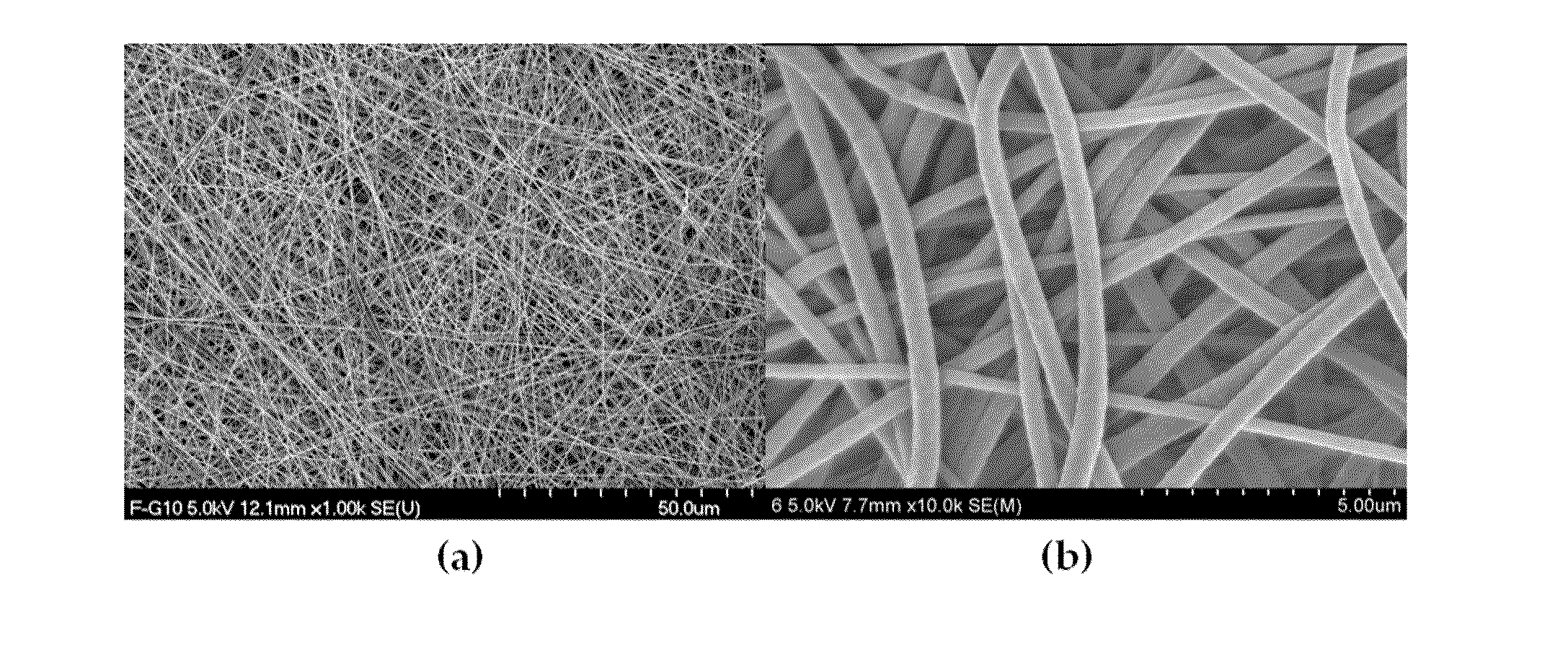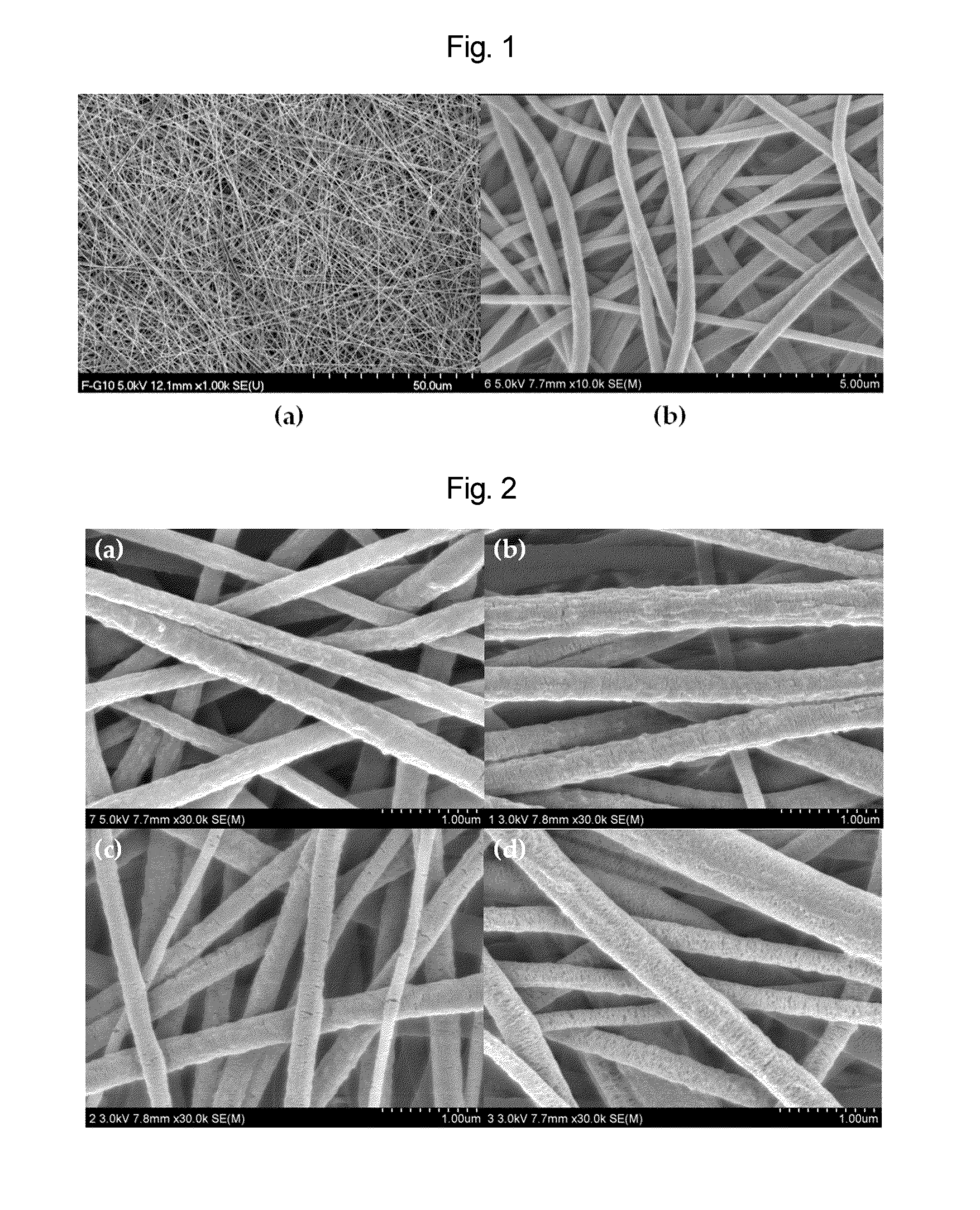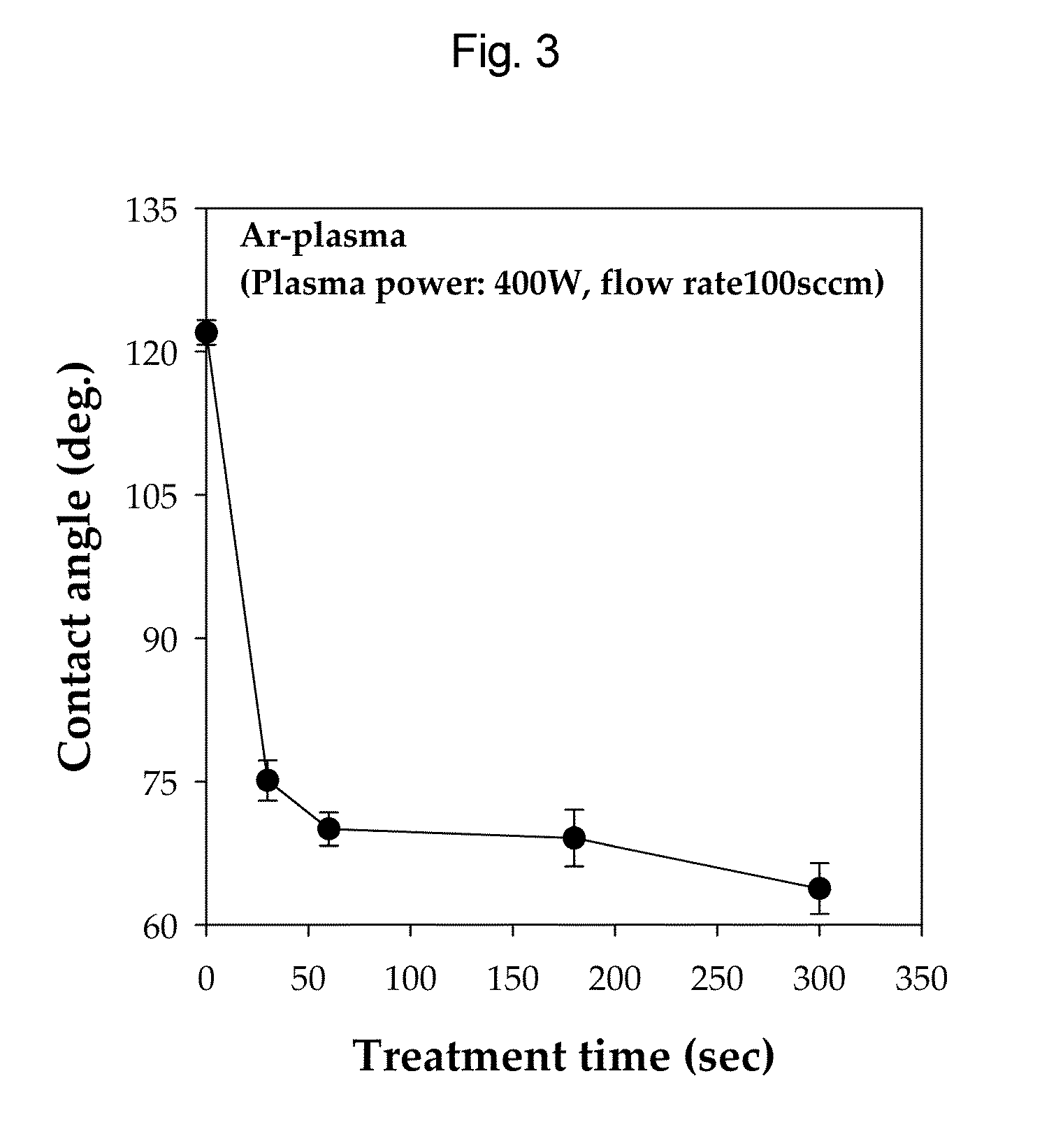Nano-fibered membrane for western blot and manufacturing method of the same
a technology of nanofibers and western blots, applied in the direction of membranes, instruments, electric/magnetic/electromagnetic heating, etc., can solve the problems of high cost of porous membrane manufacturing, difficult to manufacture in a large amount, uneven distribution of pore structures, etc., and achieve excellent sensitivity and maximum surface area
- Summary
- Abstract
- Description
- Claims
- Application Information
AI Technical Summary
Benefits of technology
Problems solved by technology
Method used
Image
Examples
example 1
[0059]The hydrophobic homopolymer PVdF (HSV 900) was dissolved in the solvent DMAc in an amount of 20 wt % relative to the total weight of the solution, thereby preparing a spinning solution. The spinning solution was transferred to a spinneret nozzle using a metering pump, and then electrospun under the following conditions, thereby obtaining a PVdF nanofiber web: voltage applied: 25 kV; the interval between the spinneret and the current collector: 20 cm; amount discharged per minute: 0.005 cc / g·hole / min; room temperature and atmospheric pressure.
[0060]FIG. 1 is a scanning electron micrograph of the spun PVdF nanofiber web. As shown in FIG. 1, the spun nanofibers had an average fiber diameter of about 300-400 nm. Also, the nanofibers had a relatively uniform pore diameter and a three-dimensional open pore structure.
[0061]The spun PVdF nanofiber web was calendered by passing it through a hot-plate roll heated to 140° C., thereby manufacturing a PVdF nanofiber membrane. The membrane ...
examples 2 and 3
[0062]In Examples 2 and 3, the hydrophobic homopolymer PVdF (761) alone (Example 2) or a 50:50 (w / w) mixture of the homopolymer PVdF (761) and the copolymer PVdF (2801) (Example 3) was electrospun in the same manner as Example 1, followed by calendering, thereby obtaining nanofiber membranes. The membranes manufactured in Examples 2 and 3 were subjected to TGA, XRD, SEM and DSC analysis for comparison with a membrane manufactured in Comparative Example. In the results of thermogravimetric analysis (TGA), the samples manufactured in Comparative Example and Examples showed substantially the same results and showed the typical characteristics of the PVdF polymer. These results are described below in the section “structural analysis of the membranes”.
example 4
[0063]In Example 4, the PVdF nanofiber membrane manufactured in Example 1 was subjected to surface modification using a plasma cleaner system. The surface modification was carried out for each of 30, 60, 150 and 300 sec at 400 W while supplying 100 sccm of argon.
[0064]FIG. 2 is a set of scanning electron micrographs showing the surface structure of the plasma-treated PVdF membrane of Example 4 according to plasma treatment time. As can be seen in FIG. 2, as the plasma treatment time increased, the size of cracks that occurred on the surface of the PVdF nanofibers increased. This is believed to be because the nanofiber surface was etched due to the plasma treatment.
[0065]FIG. 3 shows the water contact angle of the plasma-treated PVdF membrane of Example 4 according to plasma treatment time. As can be seen in FIG. 3, the water contact angle of the PVdF membrane was decreased due to the plasma treatment. Namely, the membrane showed a hydrophilic nature due to the plasma treatment. As t...
PUM
| Property | Measurement | Unit |
|---|---|---|
| diameter | aaaaa | aaaaa |
| temperature | aaaaa | aaaaa |
| temperature | aaaaa | aaaaa |
Abstract
Description
Claims
Application Information
 Login to View More
Login to View More - R&D
- Intellectual Property
- Life Sciences
- Materials
- Tech Scout
- Unparalleled Data Quality
- Higher Quality Content
- 60% Fewer Hallucinations
Browse by: Latest US Patents, China's latest patents, Technical Efficacy Thesaurus, Application Domain, Technology Topic, Popular Technical Reports.
© 2025 PatSnap. All rights reserved.Legal|Privacy policy|Modern Slavery Act Transparency Statement|Sitemap|About US| Contact US: help@patsnap.com



